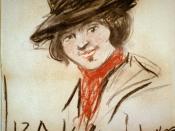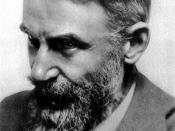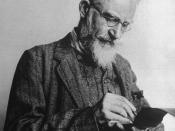Pygmalion was, in Greek legend, the King of Cyprus who fell in love with a beautiful ivory statue, Galatea. The more he looks upon her, the more deeply he falls in love with her, until he wishes that she were more than a statue. Taking pity on him the goddess Aphrodite blew life into the statue and made it come alive as a beautiful woman. The Pygmalion story written by George Bernard Shaw derives from the famous myth by Ovid's Metamorphoses, in which Pygmalion, disgusted by the loose and shameful lives of the women of his era, decides to live alone and unmarried. The word "metamorphoses" means "transformations", and the unifying theme of these myths is some kind of transformation. Clearly in understanding Shaw's and Ovid's texts one can understand differences and similarities invoked in them.
In Shaw's Pygmalion he finds a way to bring forth the truth and liveliness of the characters.
In addition he turn's the talk into action, by hinging the fairy tale outcome of the flower girl on precisely how she talks. In this way, he draws our attention to his own art, and to his ability to create, through the medium of speech, not only Pygmalion's Galatea, but Pygmalion himself. More powerful than Pygmalion, on top of building up his creations, Shaw can take them down as well by showing their faults and foibles. In this way, it is the playwright alone, and not some divine will, who breathes life into his characters. While Ovid's Pygmalion may be said to have idolized his Galatea, Shaw's relentless and humorous honesty humanizes these archetypes, and in the process brings drama and art itself to a more contemporarily relevant and human level.
Shaw's play, Pygmalion is without the doubt the most beloved and popularly received,


